Measurement methodology and graphical representation
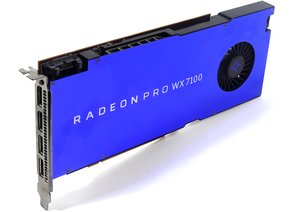
This time we use a more reader-friendly evaluation of our oscillograph measurements.
In addition to the usual, very high-resolution measurement curves, we now also offer a simultaneously display with significantly larger intervals, which is supplemented by a special low-pass filter in the hardware and an additional variable filter in the evaluation software. Be.
This is advantageous for the viewer, because it is also possible to visually evaluate the very short-term load peaks (and load waste) in their chronological sequence in such a way that they remain plausible for the outsider in any case. However, the actual results do not change.
As a reminder: How we measure in general and which methodology and equipment we use can be read at any time in the article Basics GPUs: Power Consumption, Power Supply Conflicts & Other Myths.
We have also stored much more large-format curve diagrams, which can be clicked on for a full screen. In addition, we have restructured the topics and use more comparative bar graphics and scenarios measured by us. In parallel with the power consumption, we also examine the flowing currents and compliance with the corresponding standards.
However, the test equipment as such has not changed compared to the previous tests:
| Power consumption | |
|---|---|
| Measurement: |
non-contact DC measurement on the PCIe slot (Riser-Card) non-contact DC measurement on the external PCIe power supply direct voltage measurement on the rails |
| Measuring instruments: |
2x Rohde & Black HMO 3054, triggered (500 MHz multi-channel oscillograph with memory function) 4x Rohde & Schwarz HZO50, current pliers adapter (1 mA to 30 A, 100 KHz, DC) 4x Rohde & Schwarz HZ355, touch divider (10:1, 500 MHz) 1x Rohde & Black HMC 8012 (digital multimeter with memory function) |
Power consumption in idle (idle)
We really had to look twice in the first test to believe what we measured: Just under 34 watts idle?! The Radeon RX 480 with the same chip was only 16 watts, less than half, in the launch review. However, the GPU clock is back to the expected 300 MHz, so that the cause at the end could be identified as the much too high clocked memory.
Update: Troubleshooting the driver
We were able to repoduduce this bug together with AMD, so that it no longer occurs with the current beta driver. We have therefore supplemented the old measurements in the idle with the new values below. The power consumption dropped to 20 watts, which is still relatively high, but already much better
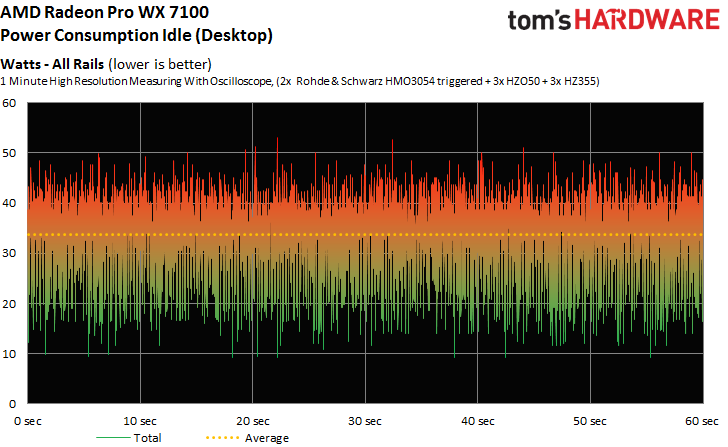 |
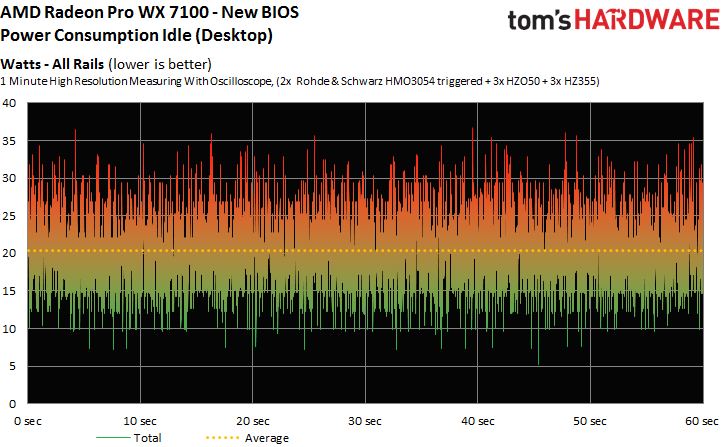 |
If you split the whole thing into the individual rails, the picture is very different. For example, the old driver still absorbs a relatively high amount of power, especially on the motherboard slot, as the memory is also supplied here:
With old driver:
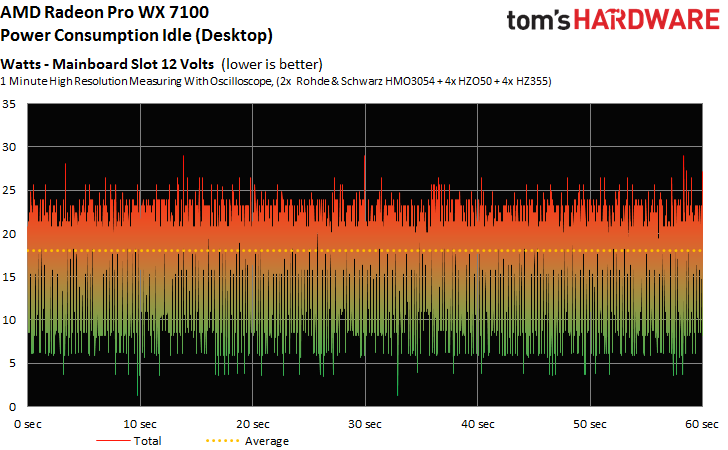 |
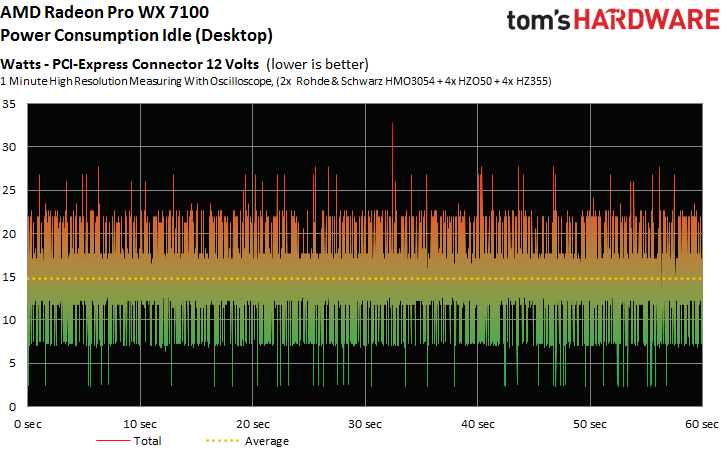 |
With a new driver
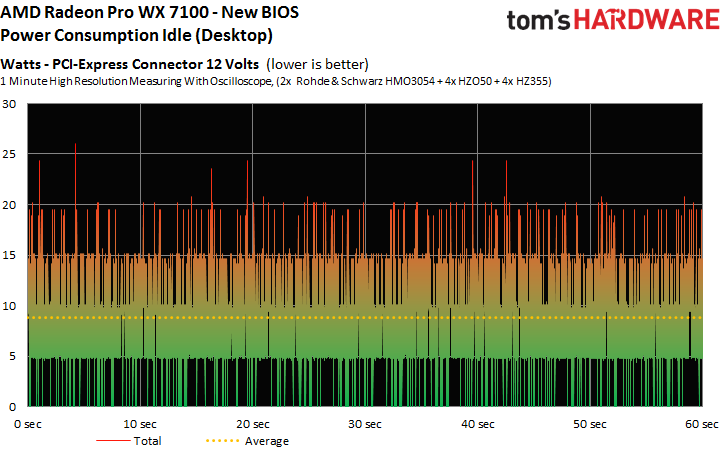 |
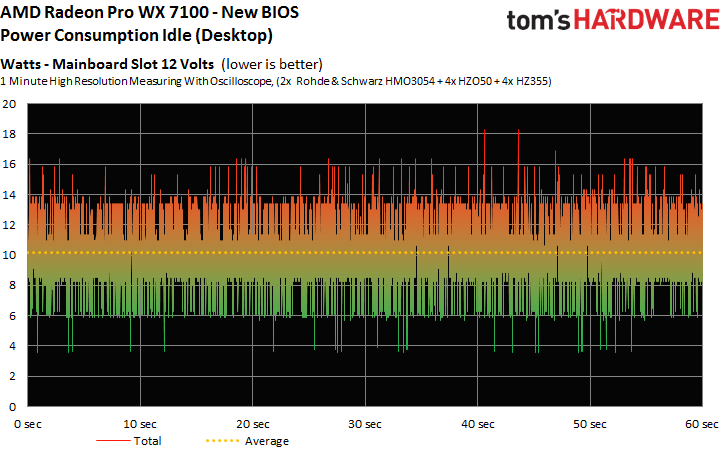 |
If we now remember which voltage transformer phase is connected to which supply line, then the additional watts of power consumption in the idle are clearly omitted from the memory. And right: We could notice extremely wild clock changes, whereby the old driver was in most time the full clock of 1750 MHz and was only sporadically clocked down. This has been completely corrected with the new driver:
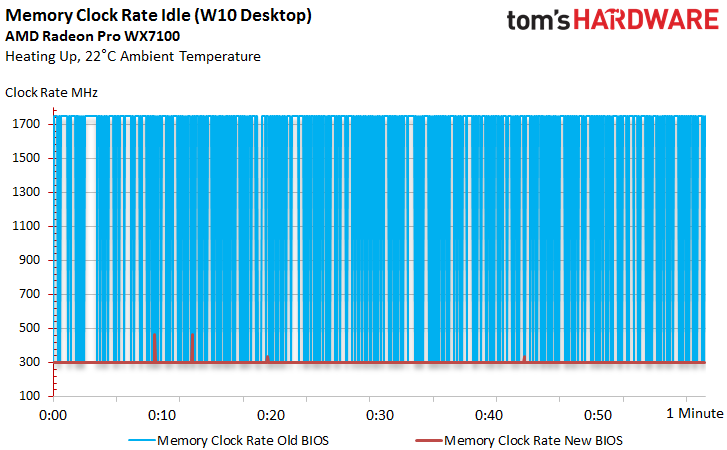
Power consumption in different load scenarios
Let's take a quick look at the overall power consumption. We first see a very restrictive power limit, which also ensures that the card still misses the 140-watt mark significantly even during the stress test. All the more demanding applications seem to be stuck at 137 watts – without any air upwards, which is also a good thing.
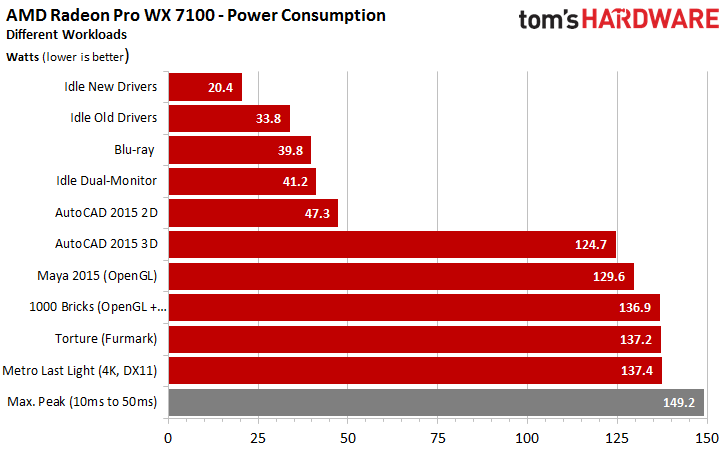
Loading of the power supply connections
Let's first look at the high-resolution excerpt of the one-minute measurement with a lot of data sets for all supply lines, including all extreme impacts up and down, including the fast response of Power Tune and the interactions with the power supply. Here the new driver no longer has any influence on the result, the values are approximately the same:
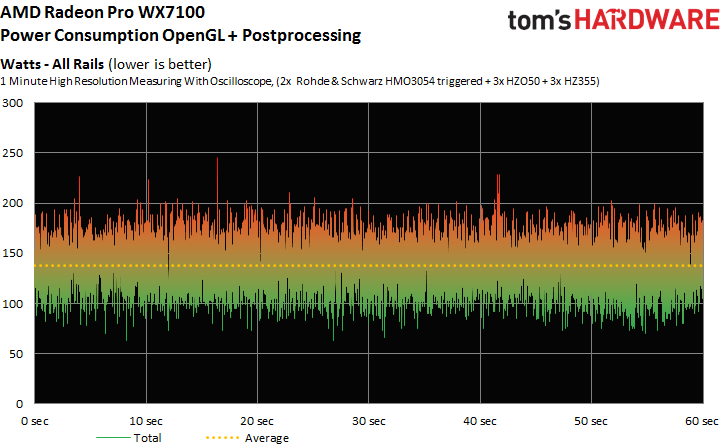
But all these spikes confuse more at first glance than they might tell the average user. For this reason, we only use curves with lower resolutions for the following ratings, which are also the result of a variable low-pass filter.
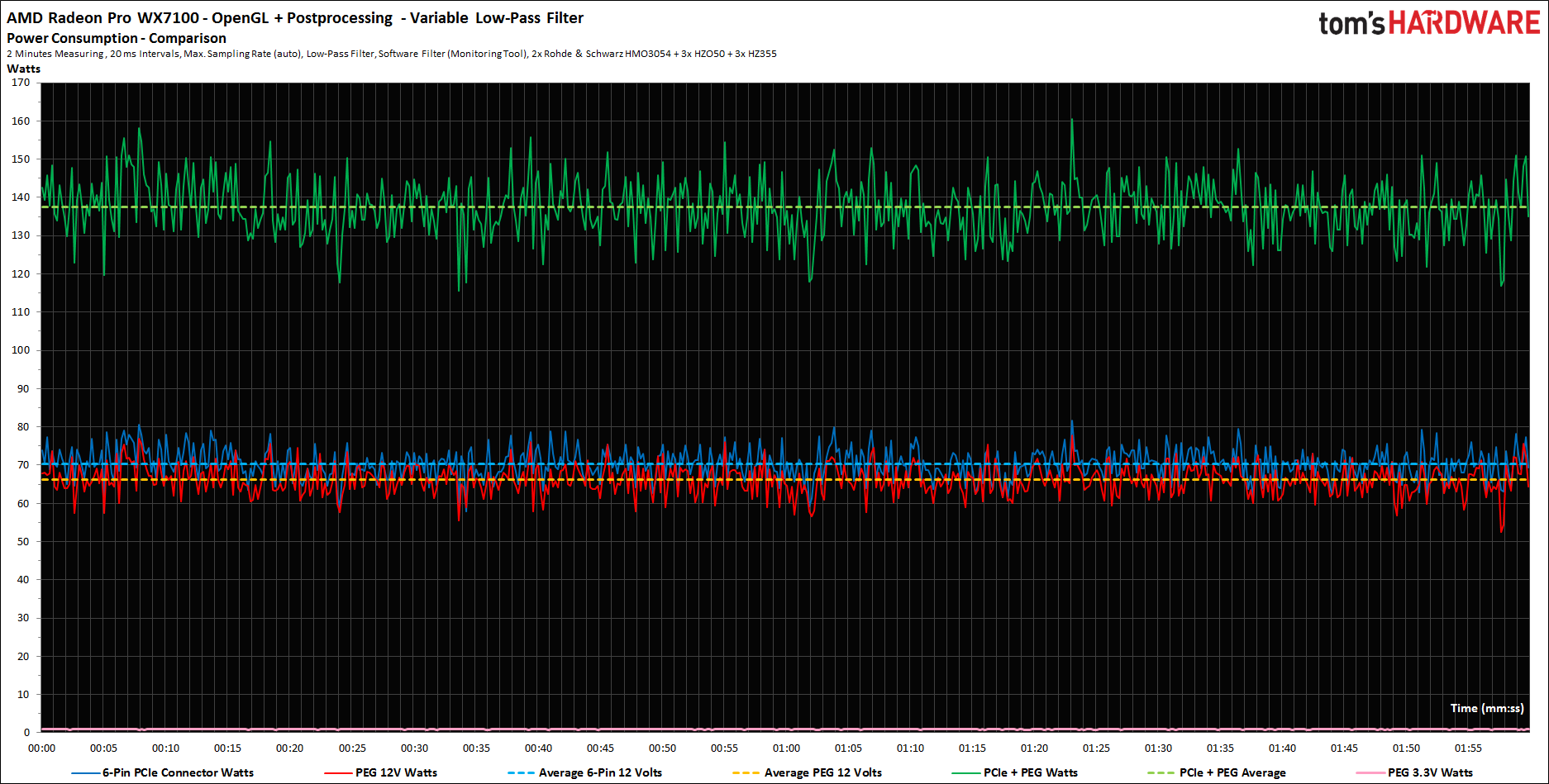 |
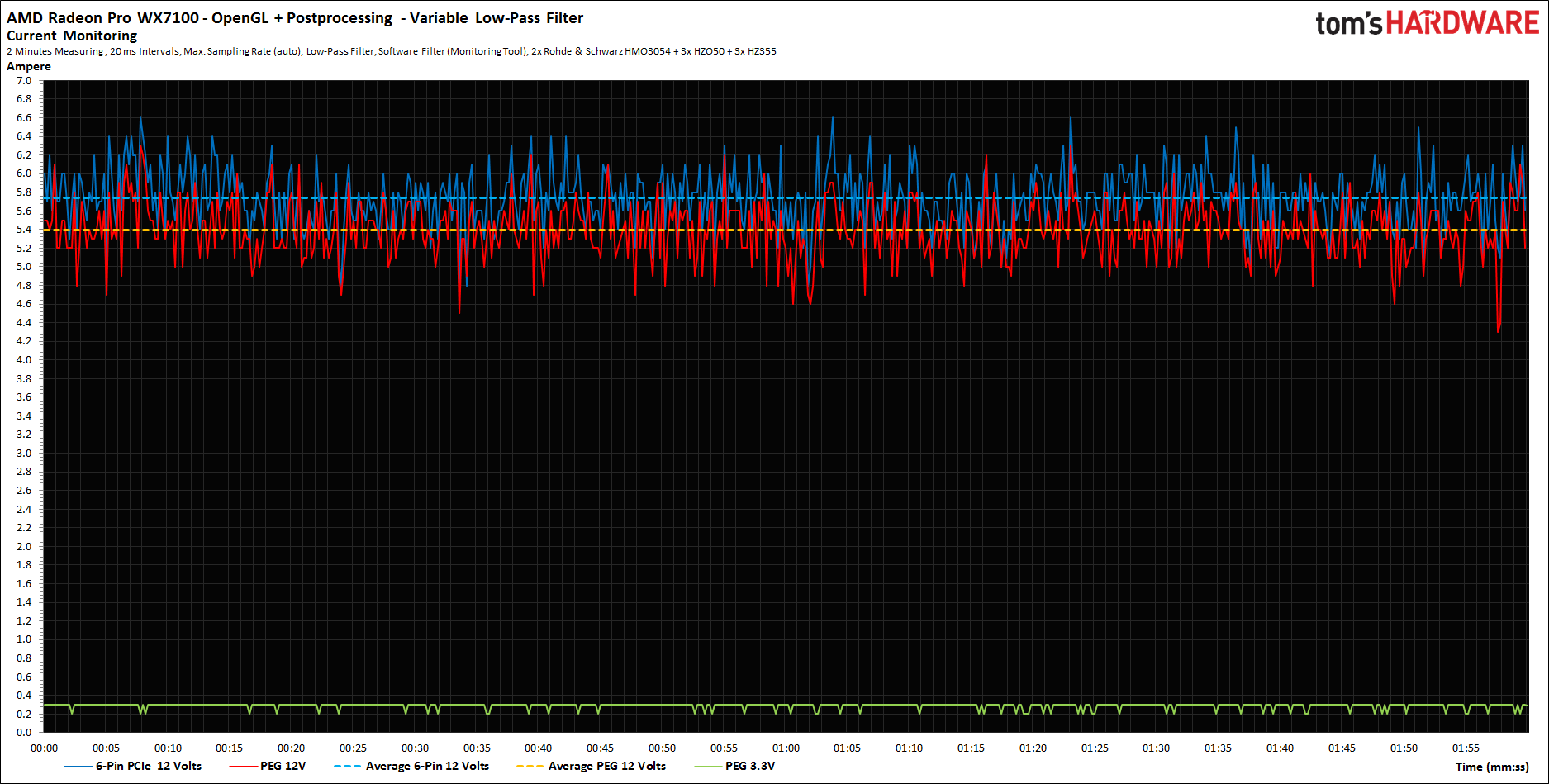 |
What is important to us now is the balance between the two 12-volt supply rails, i.e. the motherboard slot and the external PCIe connection. If we briefly remember what we had already written about the board design and the supply of the individual converter trains, then the results fit very well into the picture. However, we would like to point out that the graphics have been changed and now include the idle values of the new driver:
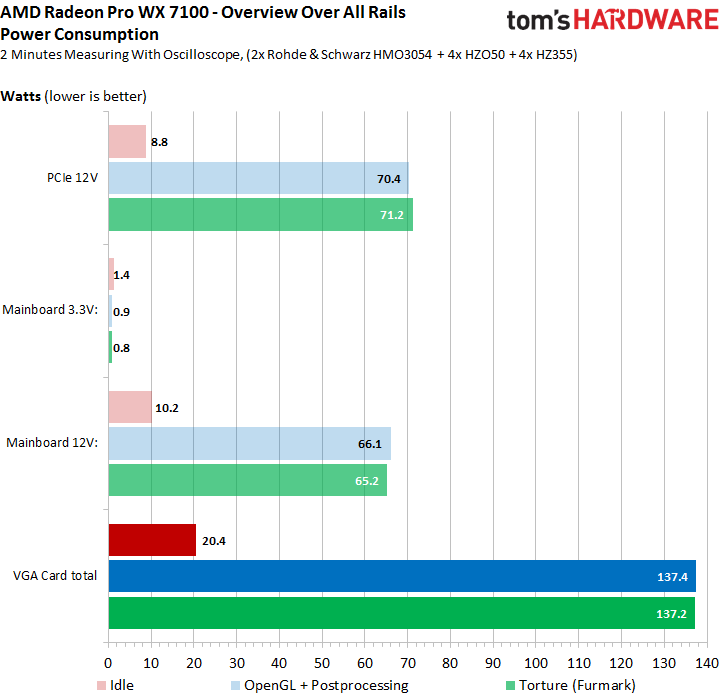
Whether extreme 3D load of an application or Furmark – the 137 watt limit we have already mentioned hits exactly the norm. With around 66 watts on the motherboard, you are exactly where the PCI SIG sees the maximum load for this connection. Because the 75 watts that have been collected are generally wrong, since as a product it results only from the maximum permissible current of 5.5 amperes and a supply voltage still within the ATX standard (which can also be slightly higher than 12 volts).
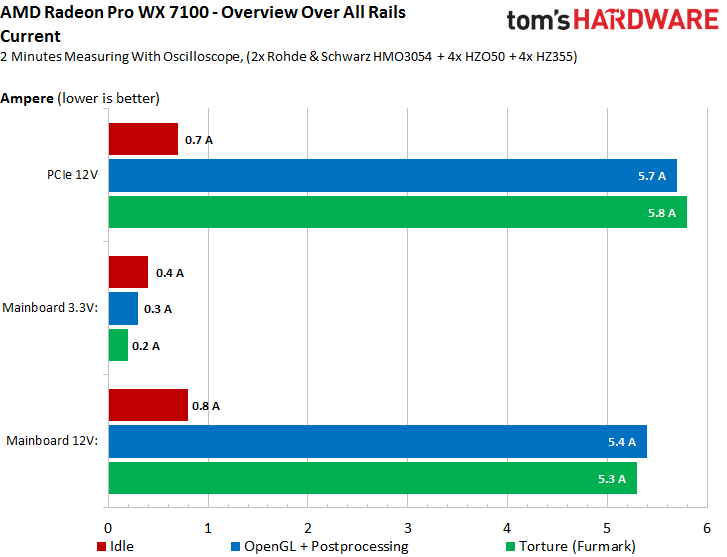
That is why, of course, we have also tested the flowing currents and can certify with a clear conscience that this map is still very much within the norms for the currents. Documentation of stress test runs can be omitted because the power consumption limit is met and the differences to the demanding applications are so small that they are less than one watt.
Intermediate conclusion
The power consumption for a leisure card like the Radeon RX 480 seemed a little too high for us at the launch; the representative of the working class in the form of the Radeon Pro WX 7100, on the other hand, seems appropriate. A decent performance in the application tests and a clearer proximity to the sweet spot make the Radeon Pro WX 7100 appear much more efficient and thus also in a completely new light.
































Kommentieren